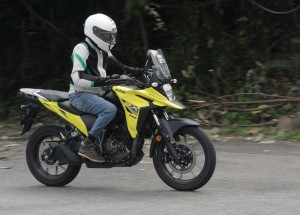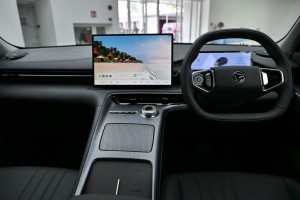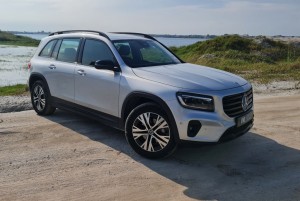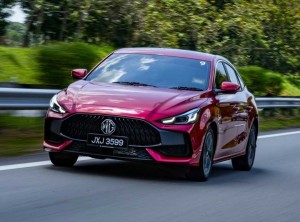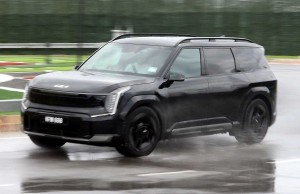Although Malaysia has started moving towards a bigger scale of electric vehicle (EV) adoption under Budget 2022, the current unfavourable global affairs continue to dampen the Malaysian economy, resulting in the public focusing their expenditure on more ‘bread and butter’ issues.
While supporting the government’s incentives for the growth of EVs, the Malaysian Automotive Association (MAA) president Datuk Aishah Ahmad informs CarSifu that the incentives could be tweaked to generate better results.
CarSifu: MAA has targeted a Total Industry Volume (TIV) of 630,000 for 2022 while analysts are predicting softening car sales in 2023 as volatility and inflationary pressure persist. What is MAA’s outlook for 2023?
Aishah: During our MAA bi-annual press conference held on July 21, we made a forecast of 636,600 units for 2023.
This was on the assumption that there will be further growth in our country’s economy and therefore MAA has set a modest growth of 1% for the automotive market for TIV 2023 (i.e. at 630,000 units), after registering impressive growth for the first six months of 2022 then.
However, the world is currently facing a very volatile environment both at the global as well as regional levels.
Many issues ranging from the Russia-Ukraine war, China-USA tension over Taiwan, escalating oil prices, inflationary concerns, increase in food prices, logistics and shipping costs, supply chains disruptions, etc. appear to have dampened global economic growth outlook and overall consumers’ sentiments.
This in turn will impact our local economy too and local consumers’ demand for new vehicles.
MAA will review and decide again on the TIV 2023 forecast sometime in January 2023 after taking into consideration all the latest prevailing factors.
What are MAA’s views on the potential growth of EVs in Malaysia especially with the current incentives now? What more can be done by stakeholders?
At present, the local market for EVs is still very small, not even 2.0% of annual TIV.
Customer interest and demand for EVs in Malaysia remains low.
Price and availability of charging stations are the main reasons.
Even with tax exemption incentives provided by the government, the cheapest electric car is still beyond the reach of most ordinary rakyat.
For example, the cheapest EV such as Nissan LEAF which cost more than RM150,000 is way higher than our national cars (which cost below RM60,000 for a B-segment car).
Nonetheless, MAA is very appreciative of the government’s recent incentives for EVs.
It is a move in the right direction.
The Malaysian government is targeting 30,000 EVs by 2025.

Aishah.
The key driver at the moment is supply-side incentives; lowering the purchase price of EVs to a level comparable to Internal Combustion Engine (ICE) version.
Without support and incentives from the government, it is not easy for the EV market to grow.
The implementation of the EV industry in Malaysia ought to be carried out in stages for the industry to sustain itself in the longer run.
For example, start with incentivising the industry to introduce models (in CBU vehicles) followed by CKD vehicles subsequently in stages.
More infrastructure, particularly charging stations ought to be built throughout the country, not only in major cities like Kuala Lumpur.
Currently there are around 700+ charging stations throughout Malaysia and the government is targeting 10,000 charging stations by 2025.
More direct incentives to buyers of EVs such as corporate incentives to employers providing EV corporate cars, individual tax reliefs, etc should be explored to encourage more buy-in from the consumers.
Government fleets should also be encouraged to be EVs.
The present EV charging infrastructure in Malaysia looks sufficient to support the small number of EVs on the road. How much more of the infrastructure needs to be built for future EV growth?
The government has announced that up to now, over 700+ EV charging facilities have been installed nationwide currently.
This is not enough to cover the entire length of the country, from Perlis to Johor, east coast states as well as Sabah and Sarawak.
As such, the government plans to set up 10,000 charging stations for EVs in Malaysia by 2025 under the Low Carbon Mobility Blueprint (LCMB) 2021-2030.
What is MAA’s take on the government’s aim to grow the EV market share to 38% by 2040 through the Low Carbon Nation Aspiration (Aspirasi Rendah Karbon) 2040, which is part of the National Energy Policy 2022-2040 (Dasar Tenaga Negara, or DTN)?
We are not privy to how the government had decided to fix the target of 38% by 2040 nor do we have the details of this target.
Is it based on total vehicle population or annual sales (i.e. TIV)?
However, we do know that the government is seriously focusing to grow the EV market in Malaysia and will introduce new policies to spur EV growth.
Perhaps there will be more new incentives and measures to be introduced and announced by the government in the coming years to drive the country towards achieving the Low Carbon Nation Aspiration.
Nonetheless, we support the move to grow the EV market share in line with global trends and the need to protect our environment given the devastating impact of climate change that we have witnessed lately.
Kindly elaborate on MAA’s proposal for extension of EV incentives for up to 10 years?
At this moment, the incentive validity period approved by Government is too short.
The incentives announced during Budget 2022 for EVs are rather short-term in nature.
For example, only a two-year incentive for CBU EV (it will end by Dec 31, 2023).
The industry has yet to see long-term oriented policies for EV development.
For the past many years, MAA had been advocating for the government to consider providing a longer validity period of incentives, for example, 7 to 10 years.
This is to follow vehicle lifecycle development and perhaps committed volume for the investment by the car companies.
For the automotive industry which is very capital intensive, it is not viable for MAA members to consider short-term oriented investment projects.
It will be difficult for our members to get support and buy-in from their overseas principals.
Does MAA expect the internal combustion engine (ICE) cars to still play a major role in Malaysia’s transportation sector for the coming 10 years?
This is very difficult to assess.
A lot will depend on what policies and initiatives the government is going to provide in the coming years in our efforts towards achieving Low Carbon Nation Aspiration.
It will also depend on whether our country can afford to provide so much funding and incentives to the EV sector while there are many other pressing social issues faced by the rakyat.
For example, low-cost housing, public transportation in towns and rural areas particularly outside Klang Valley, healthcare facilities, etc.
Technological improvements especially in the systems like the EV battery and the cost of EVs will also be a key factor as to whether the switch towards EVs will be successful or not.
In the next 3 to 5 years, we foresee ICE cars will continue to form the bulk of new car purchases by consumers.
However conversion from ICE to EV is being seriously studied and focused to convert current ICE cars to EVs.
What are the steps that could be taken so the lower income group will be able to enjoy the benefits of EVs?
As mentioned earlier, price is the main reason.
Even with tax exemption incentives provided by the government, the cheapest electric car currently is still beyond the reach of most ordinary rakyat.
Perhaps the government should consider reducing the import duty imposed on EVs which is very high now at 30% for CBU EVs without incentives.
This could be a transition period until the stage where there are sufficient locally assembled EVs at very competitive prices available in the market.
Government should also encourage cheaper EVs to be introduced in Malaysia.
How ready are MAA members for the EV rollout especially when it comes to aftersales support and maintenance of electrified hybrid vehicles and full EVs?
MAA members are ready.
As a matter of fact, our members representing Mitsubishi and Nissan have been selling EVs since 2013. In the early days, these companies had taken their efforts to set up sales and promotion channels, after-sales support services, etc and develop the necessary requirements including charging facilities in order to generate interest and provide confidence to our local consumers.
At the Budget 2022 announcement on Oct 29 last year, the government agreed to provide more incentives to support the development of the EV industry.
After this announcement, other well-known international brands such as Hyundai, BMW, Mercedes-Benz, and Volvo have started to introduce their models into our domestic market.
Of course, our MAA members are aware of the importance of ensuring all the necessary support facilities and services are in place before a holistic selling of EVs to the consumers.
Without these support facilities and services, it will be difficult to entice consumers to buy EVs.
What are MAA’s views on the proposed ‘Lemon Law’?
In general, MAA welcomes any measure by the government that will be beneficial to the rakyat who are consumers of our products too.
However, it is always our position that any new policy or law introduced must be beneficial to all stakeholders i.e, consumers, industries, authorities, etc.
This topic on Lemon law should be studied thoroughly and in a holistic manner prior to introducing the law in our country. It is a big subject by itself involving various products, industries, issues, stakeholders, etc.
This is also to avoid any potential confusion and complications which may hamper the growth and orderly development of the industries, society and ultimately our country’s economy.
The automotive industry involves many aspects ranging from manufacturing or assembly of new motor vehicles, distribution, dealerships, after-sales services, maintenance, spare parts, financing, insurance, etc.


